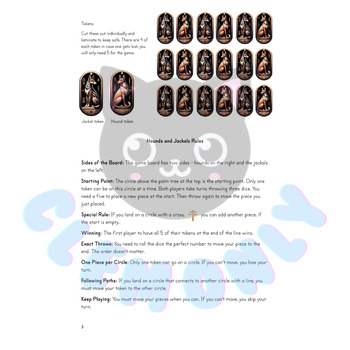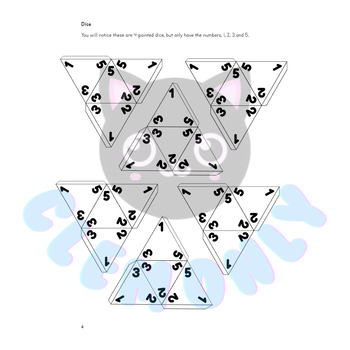Hounds & Jackals Board Game (Ancient Egypt)
ClemOnly
5 Followers
Grade Levels
PreK - 7th
Subjects
Resource Type
Standards
CCSSK.CC.B.4
CCSS1.NBT.C.4
CCSS1.OA.B.3
CCSS1.OA.C.5
CCSS1.OA.C.6
Formats Included
- PDF
Pages
4 pages
ClemOnly
5 Followers
Description
I created a printable version of this game to allow my children to explore a traditional Ancient Egyptian game, while learning about Ancient Egypt. This game encourages the children to engage with logical thinking and reasoning incorporating strategic analysis and risk taking. Basic mental addition skills are required especially toward the end of the map. This game was enjoyed by some of the youngest and oldest children in our school.
Total Pages
4 pages
Answer Key
N/A
Teaching Duration
30 minutes
Report this resource to TPT
Reported resources will be reviewed by our team. Report this resource to let us know if this resource violates TPT’s content guidelines.
Standards
to see state-specific standards (only available in the US).
CCSSK.CC.B.4
Understand the relationship between numbers and quantities; connect counting to cardinality.
CCSS1.NBT.C.4
Add within 100, including adding a two-digit number and a one-digit number, and adding a two-digit number and a multiple of 10, using concrete models or drawings and strategies based on place value, properties of operations, and/or the relationship between addition and subtraction; relate the strategy to a written method and explain the reasoning used. Understand that in adding two-digit numbers, one adds tens and tens, ones and ones; and sometimes it is necessary to compose a ten.
CCSS1.OA.B.3
Apply properties of operations as strategies to add and subtract. If 8 + 3 = 11 is known, then 3 + 8 = 11 is also known. (Commutative property of addition.) To add 2 + 6 + 4, the second two numbers can be added to make a ten, so 2 + 6 + 4 = 2 + 10 = 12. (Associative property of addition.)
CCSS1.OA.C.5
Relate counting to addition and subtraction (e.g., by counting on 2 to add 2).
CCSS1.OA.C.6
Add and subtract within 20, demonstrating fluency for addition and subtraction within 10. Use strategies such as counting on; making ten (e.g., 8 + 6 = 8 + 2 + 4 = 10 + 4 = 14); decomposing a number leading to a ten (e.g., 13 - 4 = 13 - 3 - 1 = 10 - 1 = 9); using the relationship between addition and subtraction (e.g., knowing that 8 + 4 = 12, one knows 12 - 8 = 4); and creating equivalent but easier or known sums (e.g., adding 6 + 7 by creating the known equivalent 6 + 6 + 1 = 12 + 1 = 13).





